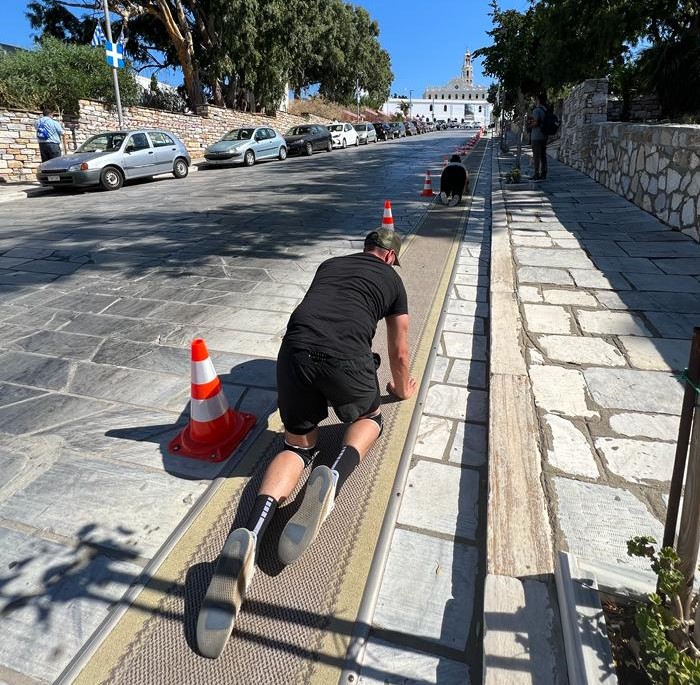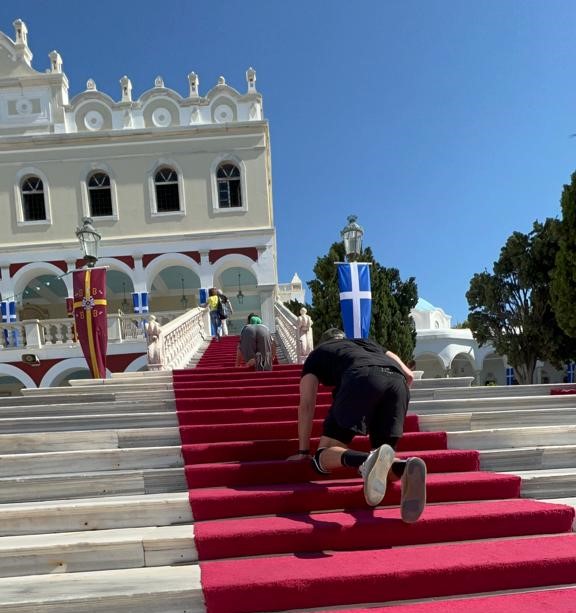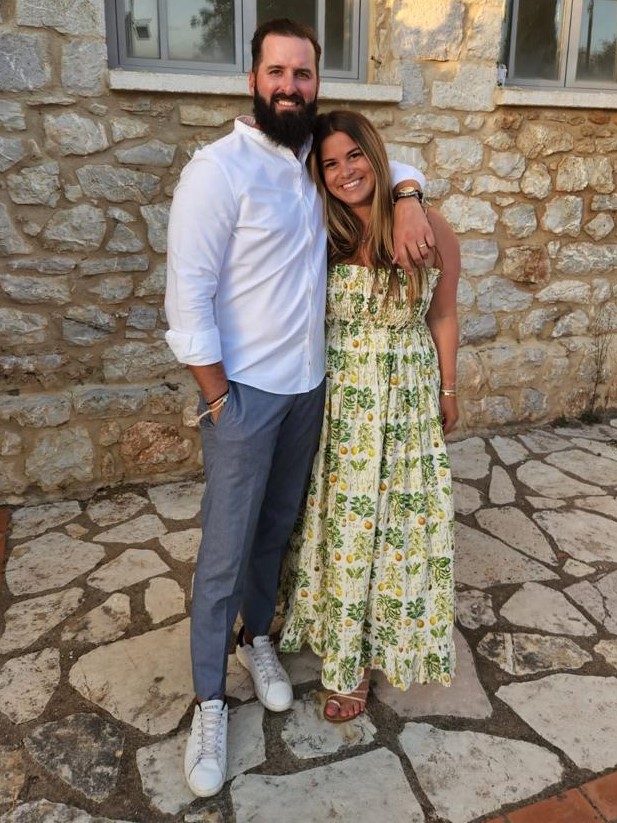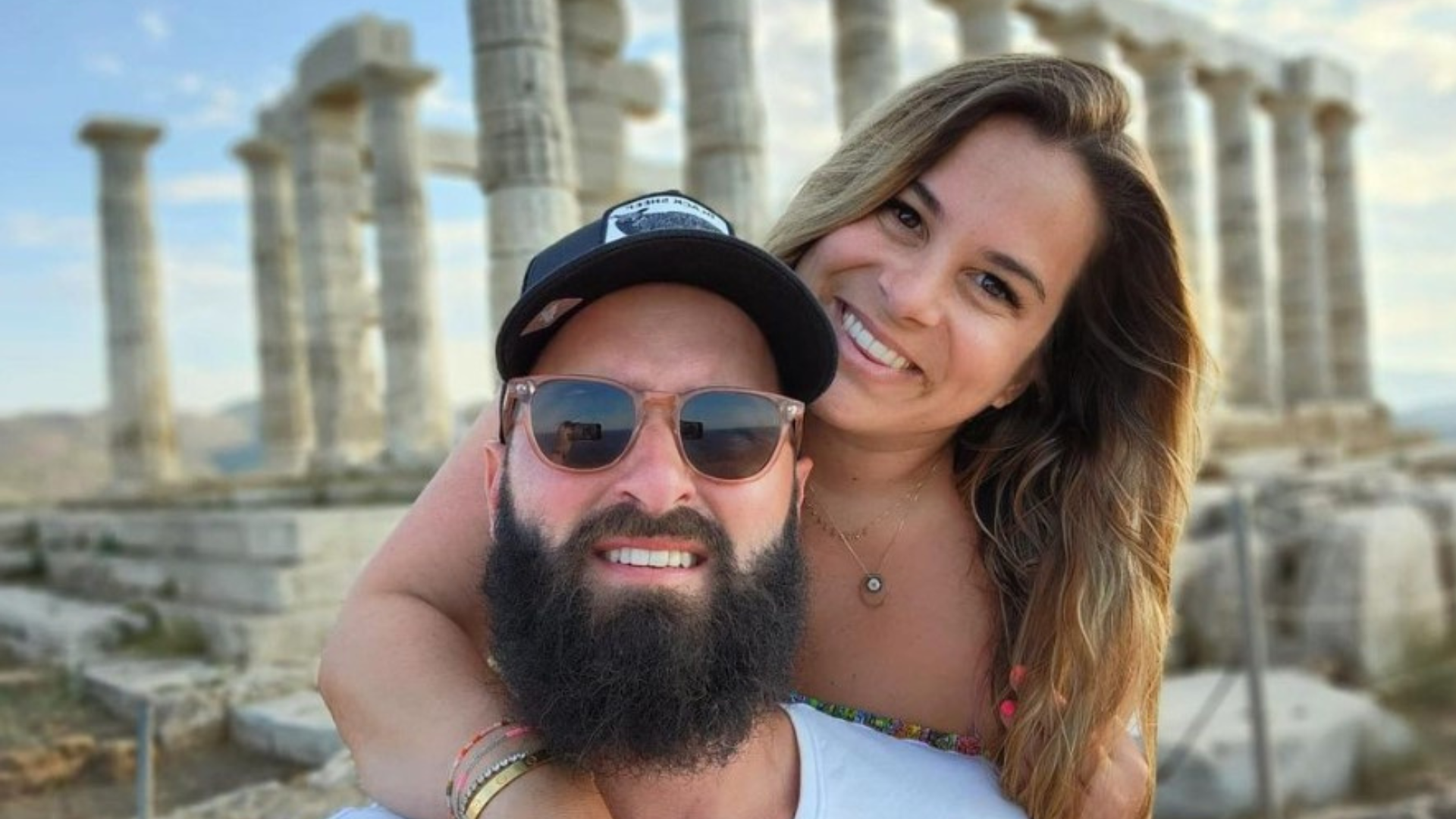By Mary Sinanidis
After several miscarriages, Will and Artemis Greenwood visited the Greek island of Tinos to worship at the Holy Church of Panagia Evangelistria (Our Lady of Tinos). Will crawled on his hands and knees from the ferry up the Avenue of Megalohari, the slope leading to the entrance of the church where the icon of the Annunciation of the Virgin Mary is held. Beside him, Artemis walked solemnly.
The crawl took 45 minutes to complete, though Will said it felt much longer as he lost sense of time. While crawling, he thought of the miscarriages his wife had and prayed for her.
“I wasn’t necessarily praying for a miracle,” Will, who is a Greek Orthodox convert from the Anglican faith, told The Greek Herald.
“I was drawn to Tinos for a long time before finally making the pilgrimage.”

Years earlier, his wife’s aunt visited Tinos to pray for Will’s sister who had ovarian cancer and is now fine. He had always wanted to experience the pilgrimage as part of his spiritual journey.
“I was totally focused, and it was almost like an out-of-body experience. You’re just going into a flow state, going hand and knee in front of each other and you just keep going. You pray for others, but you also ask yourself, ‘What am I trying to get out of it as well?’ And while feeling a pebble as you crawl may hurt physically; it is harder mentally. You’re reflecting a lot of the time,” he said.
He added that having his high school sweetheart wife, Artemis, slowly walking beside him was meaningful.

“Emotions flooded through me as I thought of the insurmountable pain of what she has had to go through with the miscarriages, and yeah, the tears came,” he said.
“The top of the stairs were crowded, but there’s something quite nice about getting there and crawling through a special entrance reserved for those who crawl as worshippers part to make way, almost like cattle. And there’s respect for you who crawled all this way and everybody moves out of the way for you to kiss the icons.”
A miraculous icon
Discovered in 1823, the icon of the Annunciation of the Virgin Mary was considered a sacred omen in the Greek War of Independence when it was discovered by Sister Pelagia, a nun who had a vision and called on villagers to start digging. Since then, the icon has drawn droves of pilgrims, and there are numerous recorded miracles attributed to it: healings, deliverances from dangers, and even the restoration of lost sight.
Its origin is unknown, though some believe it was painted by St Luke the Evangelist, and others say it is much older. Venerated from the start, the church was built to house it.
Even before the church was built, pilgrims came to pray, sealing the Cycladic island’s religious reputation, and has ensured that it draws a different type of traveller to those who choose to visit the neighbouring party islands of Mykonos and Santorini.
Despite the beautiful beaches, haute cuisine, uniquely crafted hinterlands, preserved villages and dovecotes, Tinos draws the traveller who craves meaning.
Will and Artemis came specifically for the spiritual journey, circumventing all other sights and staying on the island for just three hours. They left behind a tama in the church, hanging it beside the hundreds of other small metal plaques, each a symbol of prayer and reminder of the petitioners’ needs.

A year onwards
It is now a year since the pilgrimage and Will and Artemis are once again expecting a child (due date August 23). This is the longest term a pregnancy has run since the five prior miscarriages and the couple could not be happier that their prayer may finally be answered at around the time of the Dekapentavgousto.
For Tinos, August 15 is a special celebration which celebrates the Assumption while also marking the anniversary of the torpedoing of the warship Elli in 1940.
Back in Sydney, this Dekapentavgousto, Will and Artemis have every reason to be over the moon as the dream of holding a baby in their arms is closer than ever. Rather than lose their faith, it is stronger than ever.

“Experiences such as the pain of miscarriage can force a wedge in people’s relationships with each other as well as their faith,” Will said, but in his case it “solidified” things.
The miscarriages caused him to seek spirituality, which is why he converted to Orthodoxy, and he left a corporate career to be a landscape gardener with more flexibility and time to be with his family.
“There was a catalyst moment for me while going through the miscarriages and trying to find meaning in everything,” he said, adding that he found solace in faith.
“When you go into the Greek Orthodox Church, I think it hits all the senses and even the smell, incense, for example, surrounds you. It is like you walk in there and your heart rate just plummets and goes into a calm state.”
Will added that when he first announced he wanted to convert, his wife thought he was joking. It only struck home when he proceeded to take catachysm classes.
He spoke glowingly of Father Sotiris at St Paraskevi Church in Blacktown, Sydney, who has helped him on the journey. And it’s a journey that is far from over as Will looks forward to creating a warm family with bonds of love.
As for Tinos, he hopes to visit again once his baby is born, and the couple is even considering christening the baby on the island.
